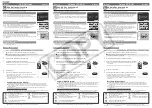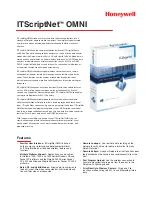
33
USING SOUNDBOOTH CS4
Editing and repairing audio files
View layered or separated waveform channels
For stereo and surround-sound files, you can view layered or separated channels. Layered channels overlay each other
in different colors, better revealing overall volume changes. By contrast, separated channels appear individually, better
revealing distinct volume changes.
❖
Choose View > Channels, and then choose Layered or Separated.
Channel View options
A.
Layered
B.
Separated
See also
“
Change interface brightness and colors
” on page 15
Customize the spectral display
1
In the Tasks panel, click Remove A Sound.
2
From the Resolution menu, choose a high setting to display frequencies more accurately, but time location less
accurately. Or, choose a low setting to do the opposite.
Use high Resolution settings to identify artifacts of long duration (like squeaks or 60-Hz hum). Use low settings to
identify transient peaks (like clicks and pops).
3
For Vertical Scale, enter a higher number to display frequencies more logarithmically, or a lower number to display
them more linearly.
A logarithmic display better reflects the uneven frequency emphasis of human hearing, providing better low-frequency
detail. A linear display gives equal weight to each frequency.
4
To limit playback to frequencies you’ve selected with the Frequency Selection, Rectangular Marquee, or Lasso tools,
select Play Selected Frequencies Only.
By default, the option above is deselected, so Soundbooth plays all frequencies in the same time range as selected
frequencies.
See also
“
Visually identifying noise
” on page 42
Zoom audio
Zoom into the current display
Place the pointer over the Editor panel, and roll the mouse wheel. (Roll over the waveform display to zoom time ranges;
roll over the spectral display to change the vertical scale.)
A
B
Updated 15 July 2009
















































